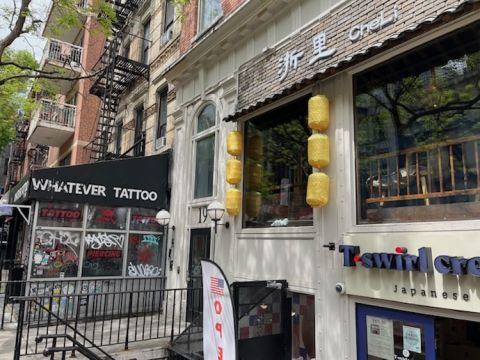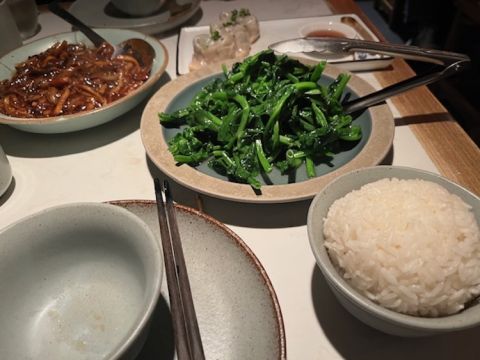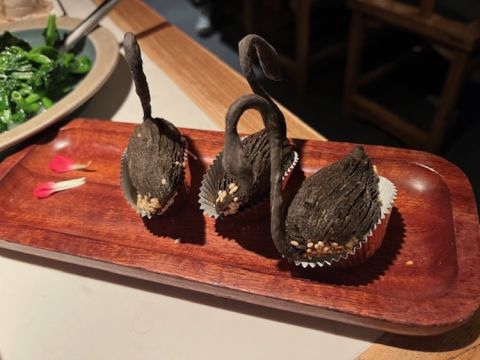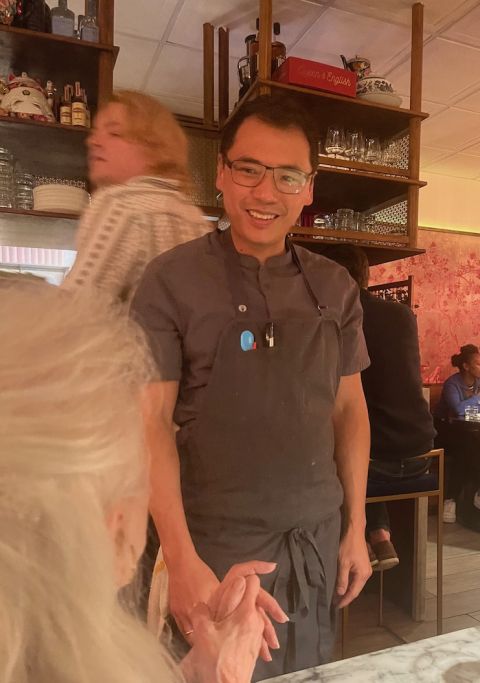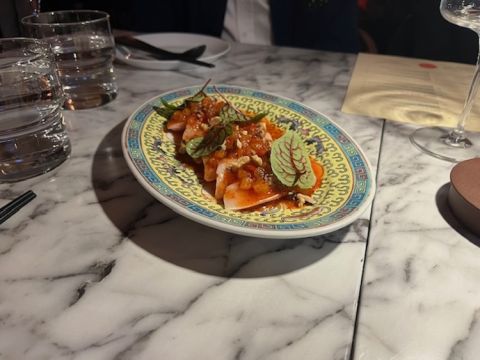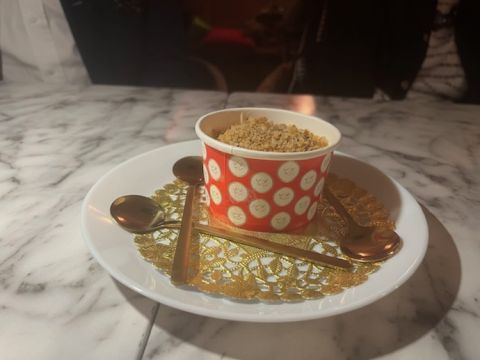Eating Chinese in NY and DC
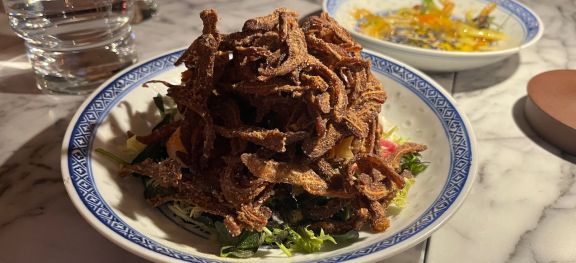
During a recent whirlwind trip to the East Coast, Nick discovered two Chinese restaurants that offer not only a range of very innovative dishes but also some wine interest, too.
NYC – Che Li
Che Li came highly recommended via Pete Wells of The New York Times and NYC-based wine and restaurant writer Jon Bonné. It’s on St Mark’s Place in the East Village, close to The Cooper Union art and architecture school. Thanks to Cooper Union’s many Asian students, the street has become a hub for Asian restaurateurs and retailers. Che Li’s neighbours include a Japanese crêperie and a tattoo parlour. (The restaurant has another branch in Flushing, Queens, which boasts one of the largest Chinese communities outside Asia.)
From the moment you enter, Che Li feels very different from most Chinese restaurants. The two young women at the front desk actually smiled before handing us over to a waiter who welcomed and seated us before handing over the clothbound menu and the drinks list with a little bowl of crunchy pickled radish to nibble on. Although the interior is dark (this is New York, after all), it’s clear that considerable thought has been put into it. The owner, the Dashan Restaurant Group, has built the space to resemble a quaint Chinese village complete with carved wood everywhere and red paper lanterns hanging from bamboo rafters.
The menu, inspired by Shanghai cuisine, is as welcoming as the staff. The categories are clearly listed and the dishes seemed well thought out rather than long lists of ingredient permutations as are so often found elsewhere. We were intrigued. I ordered a dish of brown-sugar sticky rice rolls (above, with the pickled radish on the left), pan-fried wontons, pea shoots in sweet wine, garlic-smoked eel, white rice and a dish of black swan durian crisps, more in hope than expectation.
The crisp wontons stuffed with seriously well-judged minced pork and served with a fine vinegar provided a first course and were followed by the eel, pea shoots and rice (above). The sticky rice rolls and durian crisps proved more suitable as dessert. The black swan shapes, made of rice flour, contained a durian purée that had lost all of that fruit’s usually-offensive smell. All the dishes were elegantly cooked in a kitchen led by chef Qiling Wang and his wife Fang Fang, who is in charge of the restaurant’s desserts.
Although we drank only Chinese tea, I was intrigued by the drinks list that contained a page of wines from some excellent producers but, as so often, no vintages. The Santenay and the Château Pontet-Canet could be, in an NY context, quite a bargain at $99 per bottle. So too the Bruno Rocca Barbaresco for $299, but it would have to be an impressive vintage of Opus One to justify the $799 quoted. Be that as it may, I would happily return to Che Li.
DC – Queen’s English
Happiness is an emotion that I will long associate for various reasons with Queen’s English, a first-class Chinese restaurant in the Columbia Heights neighbourhood of Washington.
The name is a reference to one of two types of English spoken by its Hong Kong-born chef (and self-described ‘aspiring retiree’) Henji Cheung (above). His American-born wife, Sarah Thompson, is in charge of service and their slightly opaque, predominantly natural wine list. (She was voted Sommelier of the Year in last year’s Michelin Guide to DC.)
The couple put unparalleled emphasis on staff inclusion. On their website is a roll-call of every member of staff, alongside their photos, plus their nicknames. Anthony La Clair is known as Tony Tweezers. Jeanette Melendez is described as ‘Anchor of the Kitchen’. The two men who looked after our table of six were Walter Youngblood, aka Peanut M&M Connoisseur, and Jeff Litterst, or ‘Darling I’m a Nightmare Dressed like a Daydream’.
As Thompson explained in an email later, ‘It was my idea to put the photos of the employees on the website. It’s always a wonderful feeling to come to work and have a sense of place. We feel that every team member truly has a place here at QE and we love to show their contribution to the team and also to share a little bit about their personality. It’s also fun for the guests to come in and to recognise their faces from our website.’
On a more serious note, Cheung’s culinary leitmotif is to serve – from an open kitchen at the back of the restaurant – the style of Cantonese food that was prevalent in Hong Kong during the British era. His menu of 16 dishes plus two desserts and Thompson’s wine list were waiting on our table as we sat down. All that was necessary was some decision-making.
I volunteered to order by quickly asking the other five whether there was anything on the menu that they did not like, dismissing the rock shrimp dish, the mushroom dish, the octopus pancake and the bobo chicken but ordering one of each of all the other dishes plus two of the scallion pancakes.
We began with six thick slices of raw hamachi (above), soaked in yuzu with pineapple pao choi and walnut. Our taste buds were further enlivened by thinly sliced jellyfish with cucumber, salmon roe and sumac. These were followed by perhaps the best dish of the night, a mound of deep-fried savoury strips described prosaically as crispy pig ear, with watercress coated in goji vinaigrette and refreshed with pieces of lychee. It’s pictured at the top of this article with the remains of the spicy jellyfish and cucumber in the background.
We then enjoyed a dish of courgette and shrimp paste; lusciously thick sesame sauced and grilled broccolini with nduja, raisin and a little Chinese sausage; and lamb belly with Dijon mustard, fried shallot, togarashi and cumin alongside the most delicious scallion pancake with tamari and sesame. All this paved the way for our main course – the topic of considerable discussion with Walter Youngblood – which was a crisp, deep-fried whole sea bass topped with Napa cabbage and crab butter.
Finally, I had been intrigued from the moment I had seen the menu by the two desserts offered, a salted duck-yolk ice cream and a chocolate Sichuan ice cream, which I had seen going to other tables. Each came in a tub and were remarkable in their flavours, the salted duck yolk definitely the richer and creamier of the two.
Thompson has put together a short wine list of obvious favourites with her own and her colleagues’ recommendations marked more prominently than the producers. Hers is a 2020 Grignolino from Piemonte; Noelle’s a Xinomavro 2022 from north-western Greece, and Nemo’s a Blaufränkish/Zweigelt 2021 blend from Austria’s Burgenland. We drank and enjoyed two bottles of Ktima Ligas’s fine, textured Xinomavro 2020 rosé, which went beautifully with more or less everything (bar the ice cream), before our Georgetown hostess kindly paid the bill of US$770 for the six of us, which included the standard 20% service charge.
We left this obviously happy restaurant extremely happy ourselves.
Che Li 19 St Mark’s Place, NYC; no phone
Queen’s English 3410 11th St NW, Washington, DC 20010; tel: +1 (202) 618-1213 (text only)
We're moving Nick's restaurant reviews from Saturday to Sunday so that you have something new to read every day of the week. To stay abreast of his latest discoveries, sign up for our weekly newsletter.
Become a member to view this article and thousands more!
- 15,409 featured articles
- 275,024 wine reviews
- Maps from The World Atlas of Wine, 8th edition (RRP £50)
- The Oxford Companion to Wine, 5th edition (RRP £50)
- Members’ forum
- 15,409 featured articles
- 275,024 wine reviews
- Maps from The World Atlas of Wine, 8th edition (RRP £50)
- The Oxford Companion to Wine, 5th edition (RRP £50)
- Members’ forum
- 48-hour preview of all scheduled articles
- Commercial use of our wine reviews

